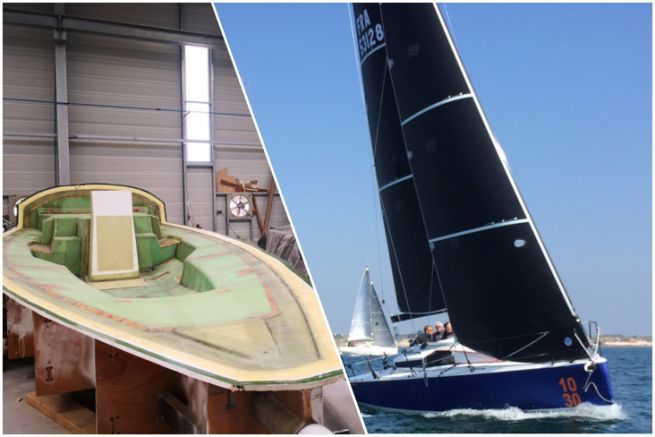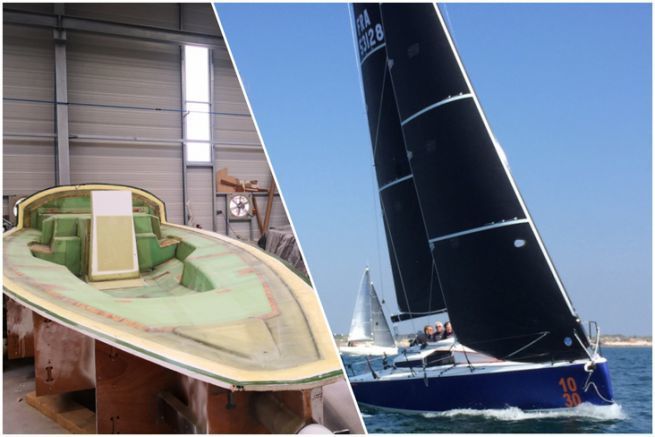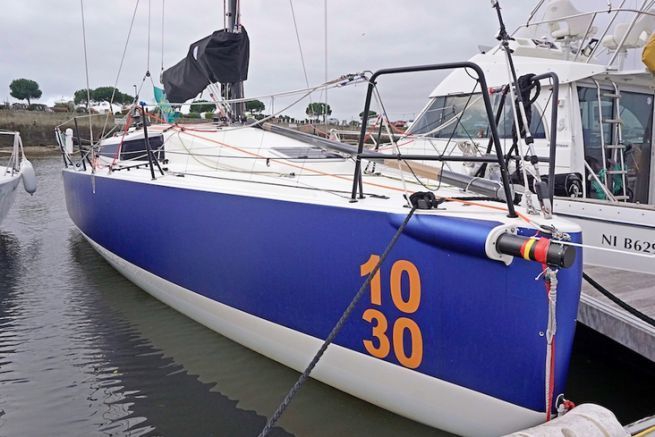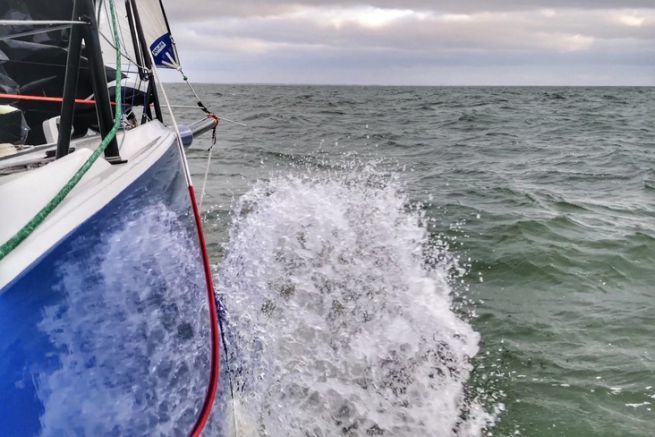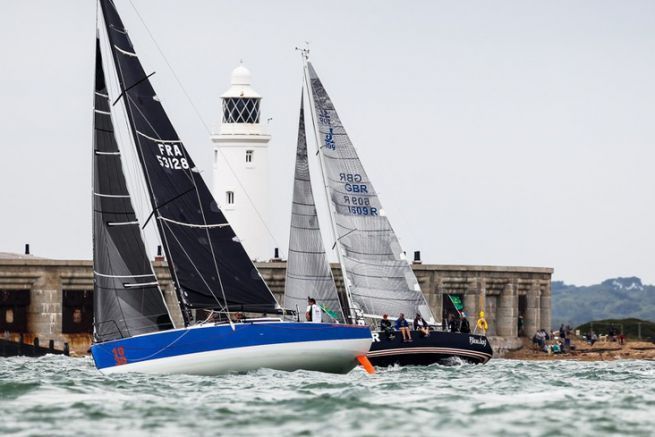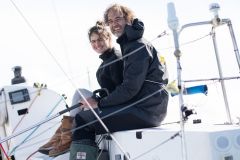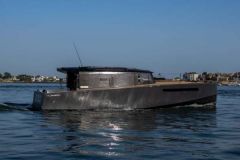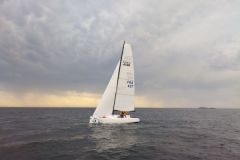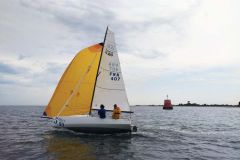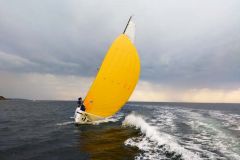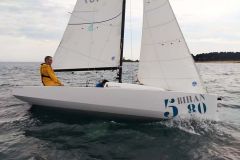A small project with many successes
JPK composites is a regatta sailboat building yard named after its founder Jean-Pierre Kelbert. JPK is a team which develops with the architect Jacques Valer fast boats in IRC, seaworthy and functional.
The JPK composites shipyard has 35 employees, 200 boats on the water, an average annual production of 20 boats and a turnover of 4 million Euros. Compared to its direct competitors Beneteau, Jeanneau and JBoats, JPK is a small production. This does not prevent it from enjoying international renown.
The JPK 1030 sailboat completes an already successful range:
- The JPKs have been on the Transquadra's podiums since 2003 with victories in 2006, 2009, 2012, and 2015.
- In 4 seasons of IRC races, the JPK 1010 has won everything and in all race formats, including the Fastnet 2013 which it won in all classes.
- The JPK 1080 released in 2014 was voted European Boat of the year and was awarded the title of 2015 RORC Champion and IRC Sailor of the Year.
- The JPK 1030 has specialised more in double-handed IRC offshore racing, which is multiplying and has already made sparks fly in its class.
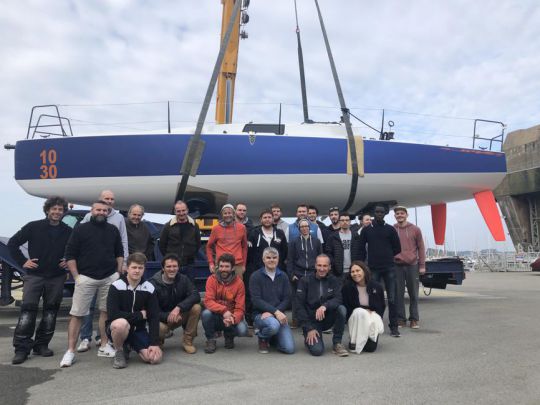
What is at stake in JPK 1030
In turn, winner in crewed races on banana courses, but also solo winner on offshore courses, it is not easy to say which is the IRC speciality of the JPK shipyard. However, the spirit of the open sea, high speeds and downwind sailing seems to run in the veins of Jean-Pierre Kelbert, who has successfully competed in numerous ocean races.
And the JPK 1030 is developed especially for the open sea. The concept remains the same as the JPK 1010, an efficient boat at all points of sail, performing well in IRC, and with the minimum layout to envisage a cruise of a few days.
But from a purely sporting point of view, the JPK 1030 is optimised for offshore double-handed sailing. The challenge is a big one, as there are only a few competitors competing for the market and the podiums. As such, the construction of the JPK 1030 requires highly qualified know-how, which is partly why it is a small production run.
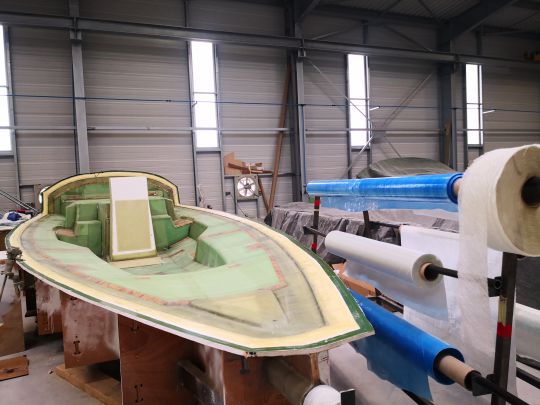
Rigorous production
For an IRC yacht to be at the top of the class, its construction must be optimal in order to be at the weight required by the architect and to obtain a perfect weight distribution. In addition, JPKs are deep-sea regatta boats, so they are likely to be pushed by highly motivated crews in the worst wind and sea conditions. Thus safety and performance are the key words in manufacturing.
The manufacture of a JPK begins with the modeling of the hull and deck to scale one, these are the "masters". Then the construction continues with the manufacture of the moulds based on these masters. And later, all the boats will come out of these moulds. JPK is one of those sites that manufacture production tools in-house.
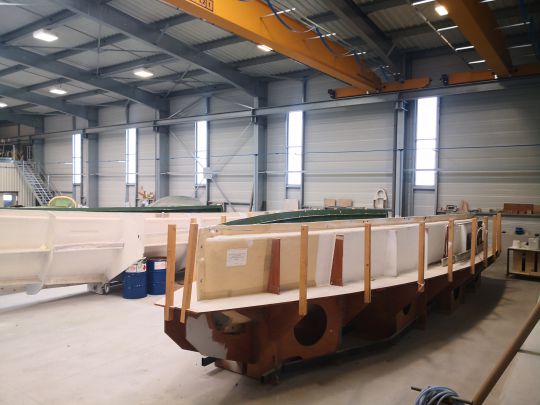
The production method is both craft and high-tech. The workshops master modern composite techniques, everything is made in infusion. Teams even make small prototype parts, like this skeg (fin) in front of the sail drive to improve performance.
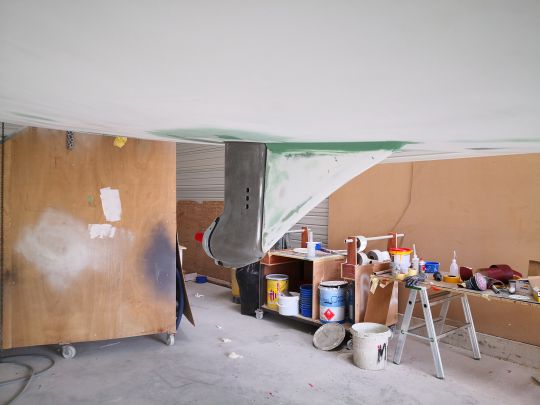
The manufacture of the JPK 1030
The hull and deck are made of vinylester in female moulds. The keel and rigging structures are infused at the same time as the hull, which guarantees the homogeneity and strength of the composite. The hull, deck and structural bulkheads are made of a sandwich infused with quality materials: multi-racial glass fabrics, PVC foam and polyester/vinylester resin.
Counter-moulds add stiffness to the whole. The bulkheads are installed and laminated while the hull is still in its mould, this technique guarantees the respect of the hull shape and provides great rigidity to the whole structure. Once the boat is fully bulkheaded, she will receive her deck and the bulkheads will be laminated to the deck. This technique is not time- and labour-saving, but it guarantees the best rigidity and lightness.
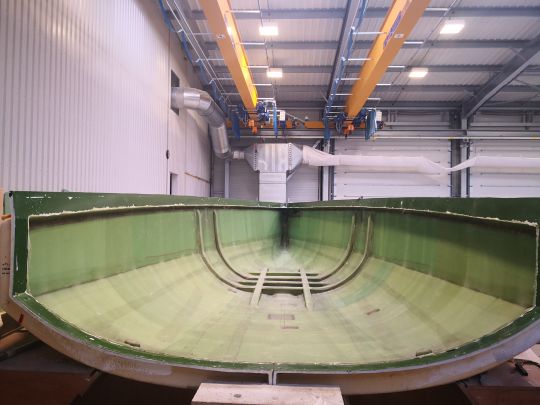
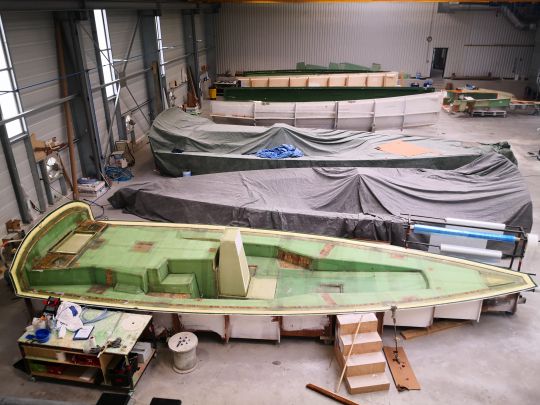
The shipyard also manufactures rudders and keels. This one is built on the basis of a cast iron keel sail (quite worked) which supports a lead ballast. This keel doesn't look like much with its straight shape, but in reality it is very technical, as it is optimized not to increase the IRC handicap too much.
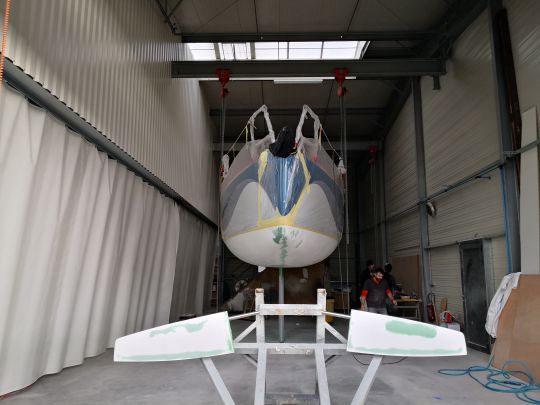
The layout is partly composed of composite blocks, also infused, which offer an excellent surface finish.
The woodwork is produced by Naviline and installed by JPK teams. The whole is very well made and assembled, but perhaps lacks a bit of personality in the design.
Then, teams of technicians take care of the bodywork, fittings, motorization, plumbing, electricity and electronics in the workshops.
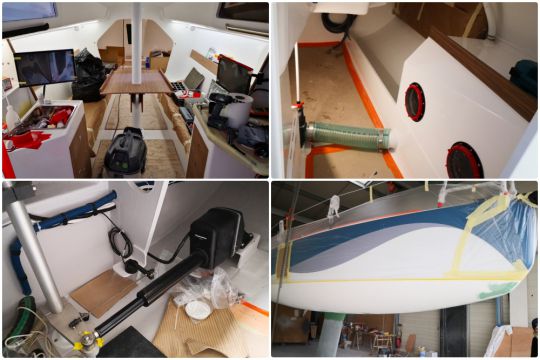
Finally, once the JPK 1030 comes out of its mould, the hull is fully sanded. It receives a finish of the parting line, grommets and all appendages worthy of the preparation of a racing professional.
The JPK 1030 is an IRC competition boat that stands out from industrial production by its top-of-the-range construction through which attention to detail is expressed.
